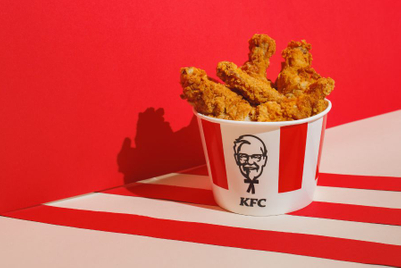
Eugene Cheong—longtime creative chief at Ogilvy—has started an agency called e. He has allied with Singapore-based creative indie Blak Labs which will provide creative, tech, media and production firepower. The two agencies will work side-by-side on projects in a symbiotic manner but will maintain separate P&Ls.
Cheong says: “The peeps at Blak Labs will help me transmute the great ideas and grand plans in my head and my gut into films, posts, websites, billboards, banners, strategies and world-class content. It’s good to have good friends.”
“Eugene is one of the founding fathers of advertising in Singapore,” says Charlie Blower, managing partner of Blak Labs. “He has more creativity in his pinky than most creative departments combined. We're in this collaboration to support Eugene in his new business venture. With his creative reputation, there are clear benefits for us in the collaboration. It's a win-win for both agencies."
In the last 18 months since he departed Ogilvy, Cheong worked with a number of small indies including Blak Labs on projects for multiple brands. He tells Campaign Asia-Pacific that he's drawn to the processes of a nimble outfit like Blak Labs compared to a larger network.
“With big agencies, we used to have juniors and they take a long time to do something fairly straightforward," he says. "Now, I can literally do the work in a tenth of the time."
Part of what catapulted Cheong to start e was frustration around productivity and formalities in larger networks. He says that a typical large creative network would only have 35% of total staff actually working on a brief. The rest, he says, are made up of business administrators, account managers, finance and HR staff, and so on. Comparatively, an agency like Blak Labs would have 85% of staff working on a brief, which he argues is more speedy, effective and cost-saving.
“When I look at Blak Labs, they hire freelance accountants and lawyers, but on the contrary, in a larger network, they hire freelance creatives. So a smaller agency puts more value in their engine rather than on admin,” he says.
“For example, when I was working with [small Brazilian indie] Gut, it took four days to put together a big brand campaign. And when I was coordinating the same work at a big agency, I never had money to hire anyone, and I remember one time we had about eight interns because they’re cheap. I think big network agencies have got to restructure, there’s no way they can continue this way.”
Cheong adds that smaller agencies are also more effective when it comes to knuckling down and getting the work done. A larger network might have more supervisors than actual workers, he says, and a supervisor’s job is usually to attend “meetings, meetings and more meetings”.
“If you divide up a large company, you have salespeople, and then you have production people which includes creatives. In the advertising industry, sales administration makes up 75% of staff, and they have coffee with clients and do sales. But back in the ranch, that 35% are struggling with their load and often we had to turn down jobs,” he says.
“We used to turn down jobs because we used to say ‘we can’t make money on this. But now, at Blak Labs, to my surprise, I’m finding out that we can make money on smaller projects because we don’t need more than four or five people on a project. Ideally, the account manager should be at least 40% trained in creative so that nothing gets lost in translation. But a lot of these ‘administrator types’ in larger agencies, they have no clue—it’s not part of their training.”
When it comes to creative freedom, Cheong says that it’s still very much dictated by clients, and laments that many clients in the region want to churn out quick work rather than invest in premium creative.
“At my big old agency, we used to have 1,500 projects a year. And only about 20% of them were opportunities to create standout work," he says. "And I think it's about the same [at e and Blak Labs].”
On dream brands he’d like to work with, Cheong aspires to partner with the Singapore government for communications campaigns, and he cites “plenty of opportunity” in this area. “We also hope to get a big Singapore brand, something we can make the country proud of. Like what Ian Batey did for Singapore Airlines years ago,” he says.
“And of course, who doesn't want a great big sports brand?”


.jpg&h=334&w=500&q=100&v=20250320&c=1)


.jpg&h=334&w=500&q=100&v=20250320&c=1)
.jpg&h=334&w=500&q=100&v=20250320&c=1)
.jpeg&h=334&w=500&q=100&v=20250320&c=1)


.jpg&h=334&w=500&q=100&v=20250320&c=1)





.jpg&h=268&w=401&q=100&v=20250320&c=1)

.jpg&h=268&w=401&q=100&v=20250320&c=1)
.jpg&h=268&w=401&q=100&v=20250320&c=1)